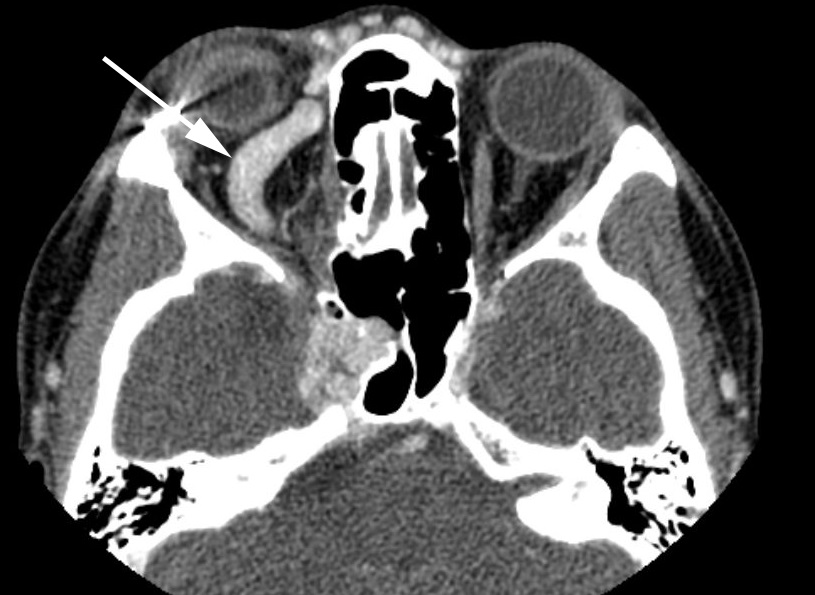( of )
Correct: 0
Incorrect: 0
A 50 year old woman developed double vision, pain behind her right eye, and redness of that eye.
What caused these abnormalities?
Correct!


 You might not have jumped to this diagnosis without excluding an orbital process, but orbital cellulitis is uncommon in adults and generally does not cause a complete abduction
deficit, as you see here. Graves disease typically shows bilateral congestive ocular signs. Cavernous sinus thrombosis is an unusual condition. Far more likely is a
carotid-cavernous fistula. By diverting arterial blood away from the sixth nerve ("steal phenomenon"), it can produce an ischemic palsy. The conjunctival hyperemia, with prominent
loops at the limbus, is suggestive of orbital venous congestion. It arises from retrograde venous flow under abnormally high pressure precipitated by “arterialization” of the
orbital veins. The patient also had high intraocular pressure. Imaging showed an enlarged superior ophthalmic vein, a key indicator of fistula.
You might not have jumped to this diagnosis without excluding an orbital process, but orbital cellulitis is uncommon in adults and generally does not cause a complete abduction
deficit, as you see here. Graves disease typically shows bilateral congestive ocular signs. Cavernous sinus thrombosis is an unusual condition. Far more likely is a
carotid-cavernous fistula. By diverting arterial blood away from the sixth nerve ("steal phenomenon"), it can produce an ischemic palsy. The conjunctival hyperemia, with prominent
loops at the limbus, is suggestive of orbital venous congestion. It arises from retrograde venous flow under abnormally high pressure precipitated by “arterialization” of the
orbital veins. The patient also had high intraocular pressure. Imaging showed an enlarged superior ophthalmic vein, a key indicator of fistula.
A widened ("convex") cavernous sinus is another imaging clue, but full demonstration of the fistula dynamics requires digital angiography.
Most likely this patient has the “dural” variety of fistula, in which small dural arterial feeders in the outer wall of the cavernous sinus dump blood into the venous lakes of the
sinus. This “red-eyed shunt” often occurs post menopausally (and in the post partum period) in the face of a drop-off in blood estrogen and progesterone. The change in hormonal
levels leads to the thrombosis of old dural-cavernous vascular connections and the opening of new connections that happen to divert blood into the orbit. The indications, timing, and
techniques for dural fistula repair are debated. In this patient, the fistula was successfully closed with coils implanted in the cavernous sinus



Incorrect
Incorrect
Incorrect